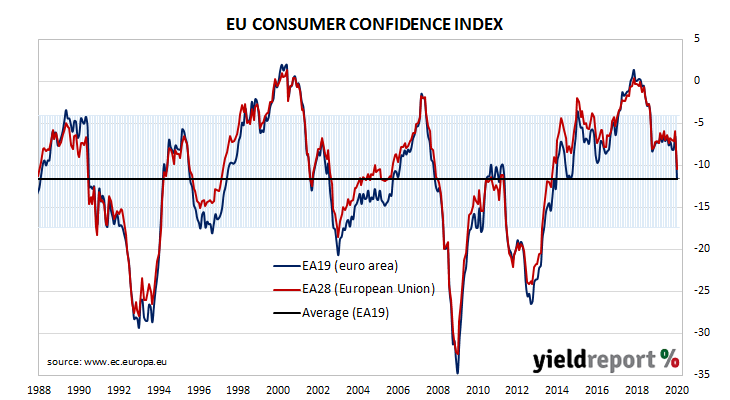EU consumer confidence plunged during the GFC and again in 2011/12 during the European debt crisis. Since early 2014, it has been at average or above-average levels, rising to a cyclical peak at the beginning of 2018. Even after it dropped back significantly in late 2018, the index remained at a level which corresponds to significant optimism among households. However, the latest reading indicates a significant change has taken place.
The March survey conducted by the European Commission indicated household confidence deteriorated noticeably, albeit from elevated levels. The latest published reading of its Consumer Confidence index recorded a figure of -11.6, above the -14 which had been expected but considerably lower than February’s final figure of -6.6. The average reading since the beginning of 1985 has been -11.6.
The report came out on the same day as the US Fed announced additional measures to support various sectors of the US economy, including the re-establishment of facilities which buy securities backed by consumer and student debt. By the end of the day, yields on German 10 year bunds had lost 6bps to -0.38% while French 10-year OATs had crept up 1bp to 0.11%.

